17 Best Tips for your
Category Pages SEO
Category pages SEO is incredibly important for your online store!
If you make your category pages search engine friendly, they will show up higher in Google search results.
And that’s exactly what you want to generate more orders and sales!
In this step-by-step guide, you will learn how to make your category pages SEO perfect.
This way you will increase the number of visitors who find your pages via organic search.
- 1. Keyword Research
- 2. Build your Keyword into the category URL
- 3. What you should consider about URL Structure and Navigation Depth
- 4. Optimize your Title for the Category Pages SEO
- 5. The Meta Description category is important
- 6. Category Optimize Headings for Search Engines
- 7. Content above the Products helps Category Pages SEO
- 8. A picture to get in the mood for the products
- 9. Conversion Optimizing Elements
- 10. Search filter in the sidebar
- 11. Products with Short Descriptions (or long titles)
- 12. Product Photos with Alt Text
- 13. Long Content for Category Pages SEO – Yes or No?
- 14. Long Product Page? Link to Top
- 15. Quick Navigation at the Bottom
- 16. Subcategories on the Category Page
- 17. Use Schema.org
- Conclusion
Visitors on Category Pages vs. Product Pages
One reason why you should care about your category page SEO is the ranking itself.
In the vast majority of cases, online stores have several category pages and very many product pages. The category pages serve as a kind of landing page and create attention.
This is especially true for the visitors who are just for the first time in your store.
For the category pages SEO there are two different backgrounds.
Ranking Product Pages is Hard
Keywords for specific products sold by multiple retailers are coveted. Often large retailers with marketing budgets in the millions are firmly anchored at position 1 on Google.
It is therefore almost impossible to get high up in the search results with specific product keywords.
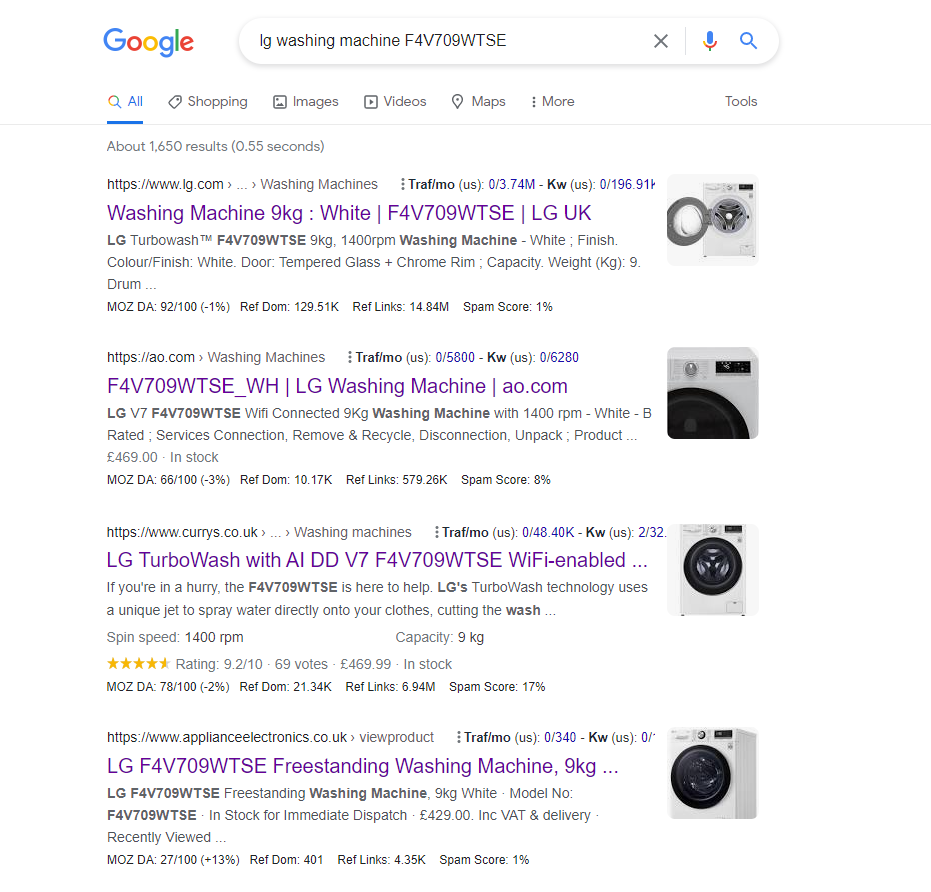
Of course, this is not true if you have established yourself in a niche and there are a manageable number of competitors.
One tactic to stand out from the competition is to give your own product names (like IKEA). This doesn’t work in all cases, but it’s worth considering for some products.
Especially when the manufacturer is rather unknown and potential customers are looking for product benefits rather than the product name, this tactic is often useful.
Most search for Keywords similar to the Category
The vast majority of people start their search for a new product or benefit with search terms that resemble a category.
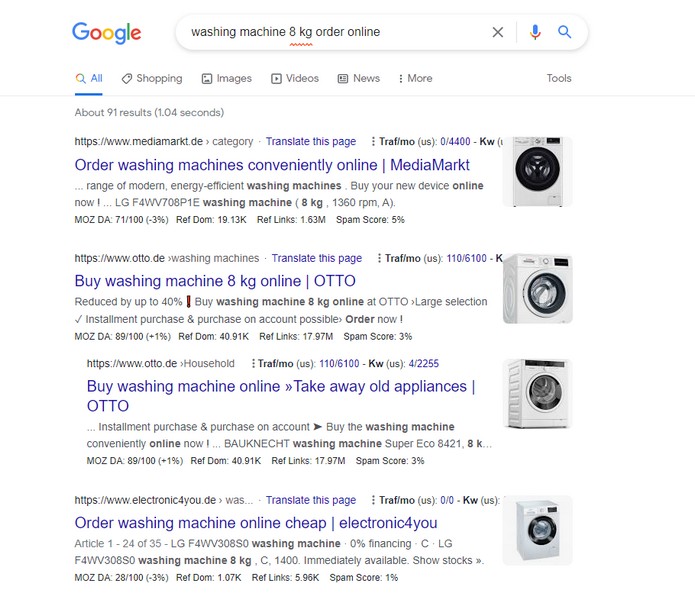
Searches like these, provide an initial overview of the market and show different options.
When searching for products in this way, the visitor is usually open to brands or products and can be advised by a good category page.
Category page SEO is accordingly very important! Your category pages see up to 89% more potential visitors than product pages, according to a Study by JumpFly.
What can you do with your category pages to optimize them for search engines and (most importantly) people?
In the following 17 points, you can read about the most important measures for category page SEO optimization.
Keywords
1. Keyword Research
First, start with your keyword research. For some of your categories, it may already be obvious, for others, it makes sense to think about the appropriate keywords in more detail.
You can see why keyword research is so important in the following graphic:

The Top 3 Results on Google receive almost 59% of all traffic. So make sure you choose the appropriate keywords for your category pages. Matching in this case means:
- You can rank in the top 3 with these keywords
- The keywords match what the visitors are looking for
Can you Rank in the Top 3 with your chosen Category Keywords?
Let’s take a simple example:
Search for “buy laptop” and you will see well-known chains such as Saturn, Media Market, and large retailers like notebooksbilliger.de and cyberport.de.
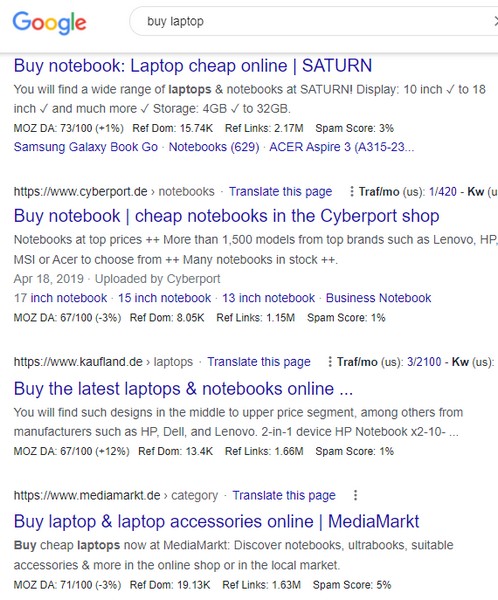
Ask yourself a simple question: do you have a significantly larger marketing budget than these companies?
If the answer is yes, then “buy laptop” is the best keyword for you.
If your marketing budget is smaller than that of Media Markt and Co, then you should choose other keywords.
“buy blue laptop”
“just order laptop online”
“buy laptop online with warranty”
are Long Tail Keywords.
These have the advantage that you can find combinations and rows of words that have not already been hard-fought for years. It is relatively easier to get into the top 3 on Google with Long Tail Keywords.
Do your selected Keywords match what Visitors can expect to find on your Category Page?
The keywords should also match what you are looking for and your products!
The better you describe what you are selling with your keywords, the lower the bounce rate.
This is calculated from the visitors who have closed your page directly after the first click.
Technically, the bounce rate is not a Google ranking criterion. However, if you have a high bounce rate (over 50-70% depending on the website), you should urgently take a closer look. There may be significant problems here.
An extreme example that illustrates the situation:
You sell bathroom fixtures and optimize your category page for the keyword:
“bathroom mirror cabinet free”
Your visitors will then come to your store via Google and won’t find a free mirror cabinet right away. Most visitors will close your website somewhat annoyed or at least confused.
Here you can see the fundamental problem behind the high bounce rate.
So, when choosing keywords, make sure that you deliver on your online store category page what you promise in the search results.
How do you find the Right Keywords?
Keyword research works through very many tools.
Google as a search engine already gives great suggestions about automatic completion.
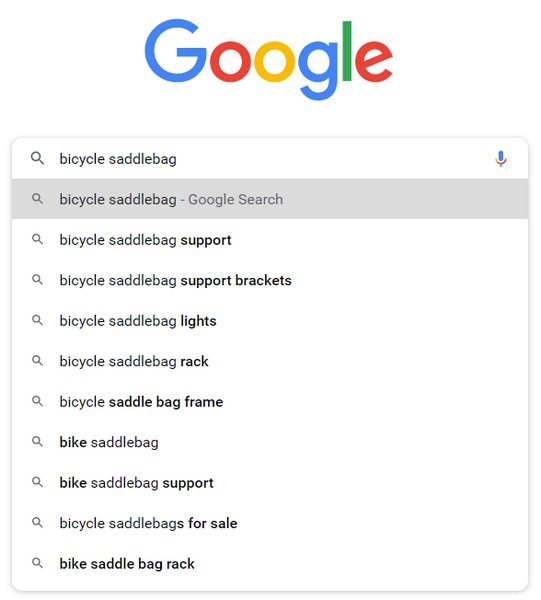
In addition, you will get more ideas and recommendations for similar and further searches.
Just enter a search term on Google.
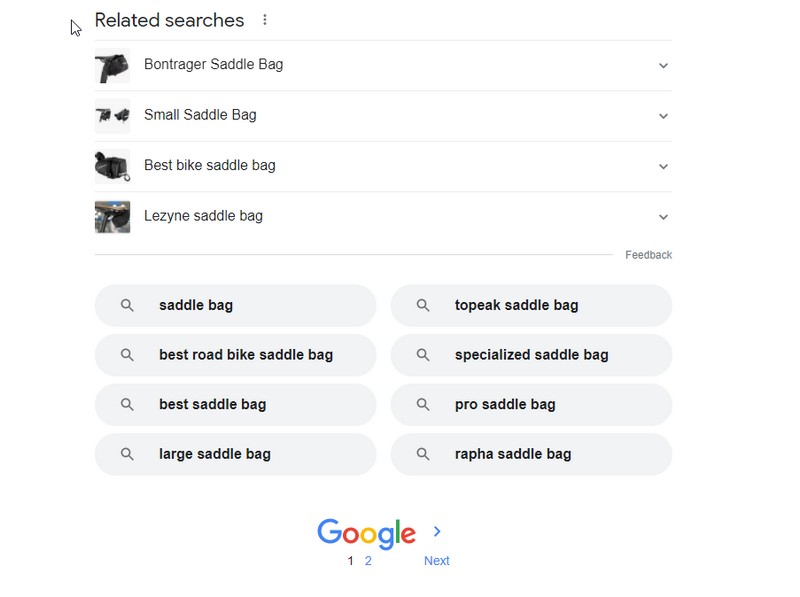
Use such suggestions to generate ideas.
Furthermore, there are plenty of tools to help you with keyword research and brainstorming.
Below are just a few:
https://answerthepublic.com/ (free of charge)
https://search.google.com/search-console (free of charge)
https://neilpatel.com/ubersuggest/ (free of charge)
https://keywordseverywhere.com/ (free of charge + with fee)
https://www.semrush.com/ (free of charge + with fee )
https://moz.com/explorer (free of charge + with fee )
https://ahrefs.com/keywords-explorer ( with fee )
Summary:
- Pick out some/all keywords that match your category
- Select ONE keyword that is most “likely” to rank for. Ideally, there is hardly any competition and a high search volume for this keyword.
- Include this one keyword 3 – 10 times in the category text (Yoast SEO will give you hints how many times).
Keywords in URL
2. Build your Keyword into the category URL
Every single page under your domain has a URL. An example:
www.ihrshop.de/kategorie17
You should include your found and the most important search term in the URL. There are a few points to consider here:
Keep the URL short
The length of the URL is a ranking factor in the 200 Ranking Criteria for Google. It is best to keep your URLs very short and descriptive. Ideally, you should also include your search term in the URL.
Keywords belong in front
When planning your e-commerce URLs, try to place your keywords as far upfront in your URLs as possible. Additional determiners like “buy” and “order online” come further back in the URL.
Separate Search Terms with –
You should use as few special characters as possible in the URLs. In general, stay uncreative when it comes to characters in the URL. Technically, many things are possible, but they can lead to problems.
- Lowercase everything
- Separate single words with -.
- No spaces (replace spaces with a hyphen)
- Avoid special characters
- No German umlauts (oe instead of ö)
As an example:
www.your-store.com/pc-hardware/ssd-harddrive-1tb
URL Structure & Navigation Depth
3. What you should consider about URL Structure and Navigation Depth
There are many ways to plan and create the structure of your webshop. Which one is the right one cannot be generalized.
First and foremost, it is important that the structure is simple and as flat as possible.
Ideally, your visitors (and Google) can reach products in less than 3 – 5 clicks from the home page.
In the Google Webmaster Central hang-out Video from Minute 31 John Mueller points out that a “/” in the URL does not count towards the hierarchy.
Google controls how many clicks away from the home page a piece of content is.
So it is possible to structure your URLs flexibly.
Mostly, however, the logic of the URLs is ultimately dictated by the navigation hierarchy. A possible hierarchy could look like this:
- Level 0: yourdomain.com
- Level 1: yourdomain.com/lenses
- Level 2: yourdomain.com/lenses/canon
- Level 3: yourdomain.com/lenses/canon/canon-ef-24-70mm
One important fact to note here:
Google uses the link or clicks depth as a weighting.
This means that a page that can be reached from your homepage (the home page) with one click is considered important.
A page that can only be reached by 2 or more clicks from your homepage is considered less important.
It follows that your category pages usually have more weighting for Google than your product pages.
This is because the product pages are usually only accessible from the category pages.
So, just from the aspect of hierarchy, you should pay attention to category pages SEO.
Title for Category Pages SEO
4. Optimize your Title for the Category Pages SEO
You have already done your keyword research? Great!
The title is one of the most important components in your search engine optimization.
On the one hand, this should be as unique as possible on the Internet. On the other hand, there should be enough search queries every month for the keyword you want to optimize for.
In addition, the order of the words is important. Put the most important keywords at the beginning of the title.
Keyword Bonus Tip
And an added bonus tip on keywords. Also use the Software from Google that Visualizes Trends, if you can’t decide between one or more words.
Examples of a Title might be something like:
- Mountain Bike Tires 26 inch | Buy Cheap at B.O.C.
- Fog Machines Buy Cheap online | real.de
- Buy Window Decoration Online – from 49€ without postage | DEPOT
Most of the big stores do it just right:
Keyword / Catchword – Search Intention / Purchase Intention | Own Brand
Purchase intention is an important indicator here!
Certainly, there are options for almost all keywords to get information or to want to buy.
Try to keep the people who want to get information away from your category pages.
For these people, you can write blog articles in your store.
The maximum length should not exceed approx. 60 characters.
Normally, your titles will then be displayed in full. However, this depends somewhat on the width of the browser window and device used.
Meta Description
5. The Meta Description category is important
Google can use your Meta Description to display it as snippets directly in search results.
This is ideal because it gives you the opportunity to communicate an important message via Google to potential prospects.
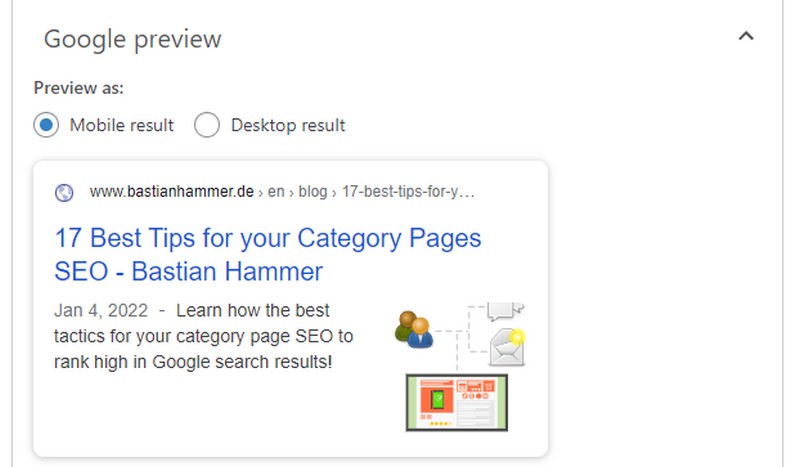
You determine what you want to give as a call to action and information to searchers, and Google can display that content.
Can, but does not have to!
In some cases, Google does not consider your meta description to be the best option. In these cases, Google then displays content from your page.
You yourself can do little to change how Google evaluates and uses your content.
However, you do have the opportunity to optimize your own content.
Focus on quality, as with almost everything related to Google and your website!
Focus on the Meta Description
You have used keyword research to find out for which keyword you want your category page to appear high up in the search results. Use this keyword also in the meta description.
No duplicate Meta Descriptions
If you have a high-quality approach, this point is self-evident. Of course, a description can only describe one category page. Each category needs its own individual description.
Keep the Content Short and Informative
Few people read the details in the search results extremely carefully. The point of this content is to get a quick and very good impression. Make sure that your description contains about 300 – 320 characters.
If you use WordPress and WooCommerce, the plug-in Yoast for your category pages SEO is an absolute must!
If you use another system that does not handle the creation and preview of your search results, then you can use other tools such as Serpsim.
Optimize Headlines
6. Category Optimize Headings for Search Engines
Headings in HTML are created with the Tags h1, h2 up to h6 excellent.
These headings are not as relevant to Google as the HTML title element. However, they do have some significance. Moreover, they help to structure your content. And simply structured content is also easy for Google to understand.
According to John Muller, h1 Headings are Not Mandatory on any Page. Also, Google doesn’t mind if you use multiple h1 headings.
So you can get creative here and structure how it best fits your content.
For clarity, I recommend sticking to the logic provided here. One h1 element and any number of nested child elements below it.
As an example, the structure of the headings:
<h1>Your heading that contains more content than the title</h1>
<h2>This is a subordinated heading</h2>
<h3>A subheading of the subordinate heading</h3>
<h2>A second subordinated heading</h2>I use headings up to h4 and h5, depending on content and logic. H6 only extremely rarely.
Content Above the Products
7. Content above the Products helps Category Pages SEO
In order to be found for a specific keyword via Google, this keyword must also be read on your website.
Surely you already have the keyword in the title, h1, and in the meta description, which is already very important.
In addition to these elements, it makes sense to place the keyword in the page text as well.
However, the space your visitors can view without scrolling is limited. Of course, you want to show your products so that they are sold.
The vast majority of store systems offer a text field where you can write something that will be displayed above the products.
Use this option and write a text with which your category page is SEO-optimized and distinguishes itself from competitors.
Two to three short sentences can already be sufficient here.
Pictures in Action
8. A picture to get in the mood for the products
To achieve more effect with the text, you should loosen it up with one or more images. Very nice is the introductory content with the following category.
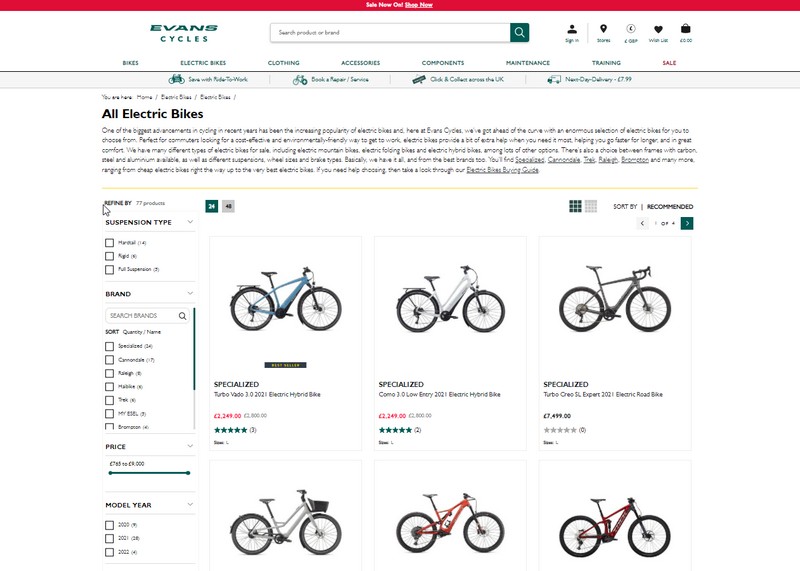
These pictures make you want more! In many cases, it makes sense to use good product photos here. The different types of photos that could be used here are:
- Mood Shots
- Photos of Product in Action
- Still Life
- Model Shots
In terms of concept, you should try to bring out the benefits of the product in the photo. For food, this could be a finished dish, for sports products you can show them in use.
Conversion Optimize
9. Conversion Optimizing Elements
Your visitors have arrived at the exact category page with products they are looking for via a search. Now offer an extra incentive to order!
Here you can once again point out a guarantee that you provide. Or maybe you just have an offer on this category.
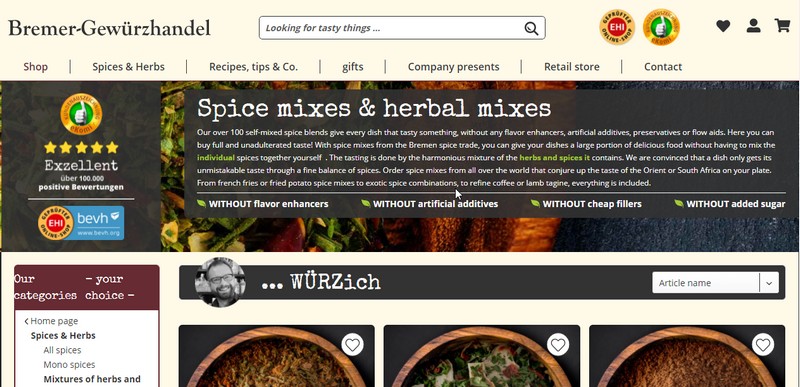
It is also conceivable that you make a coupon available. But be careful here!
Now, if you distract customers from the buying experience via additional effort, the conversion rate may deteriorate.
Filters in the Sidebar
10. Search filter in the sidebar
By now we have all become accustomed to the fact that we can limit (usually on the left) in the sidebar via filters, the products displayed. Often these filters are intuitive and you can search and filter in different ways.
Prices can be set from minimum price to maximum price. You can specify if you are interested in a particular color or ingredient.
In most store systems, this functionality is built directly into the store. Mostly, these are product attributes (color, size, etc.) that can be used as filters.
Pay attention to the order and quantity of filters here.
Depending on the product category, the order of how most people filter varies.
If you already have at least 100 Visitors per day in your Online Store have, then A/B tests can be performed easily and quickly.
If you have about three different filters, change the order after every 100 visits (preferably measured specifically against a category page).
Then measure each of the orders triggered by the category.
You can proceed similarly with the number of filters.
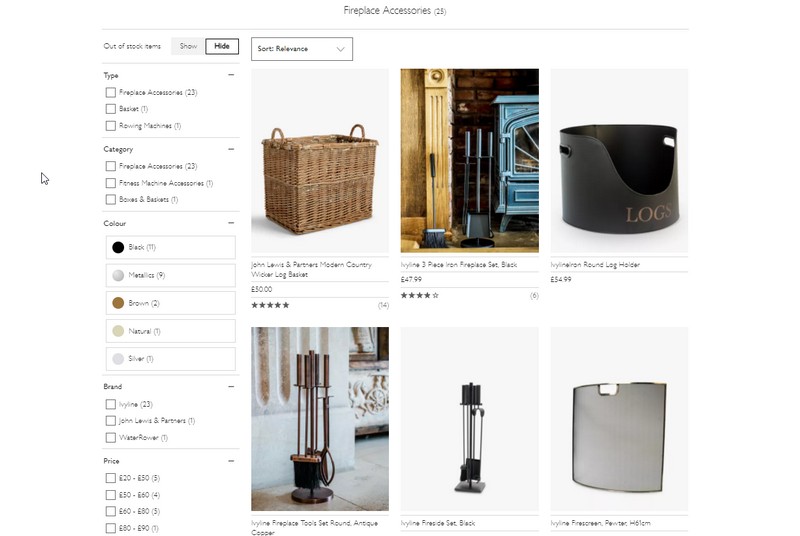
If you have many complex products, there are certainly more filters in the sidebar. If the filters are significantly longer than the products on the page, then it looks unattractive and may not make much sense. Few visitors would scroll all the way down because of the filters.
Measurements are somewhat more difficult here, but also possible.
To proceed quite simply, first simply display all filters. Once your category page has had a few hundred visitors, you can find out which filters are popular in the web analytics of many store systems.
Still note your conversion rate for this category and disable the less popular filters.
After a few hundred visitors again, compare the conversion rate. If it has not decreased and you feel that your category page looks better, you can leave the settings as they are.
Short Product Description
11. Products with Short Descriptions (or long titles)
Far too often I see products in categories that unfortunately say nothing at all in the title. There is a picture, a word (the product name), and the price.
Technically, of course, this is perfectly adequate. However, depending on the product, I am interested in even more as a visitor.
Please check if it makes sense for your products to ask questions like:
- How much is in it?
- What are the important features of the product?
- How big is the package?
- How big is the product?
- …
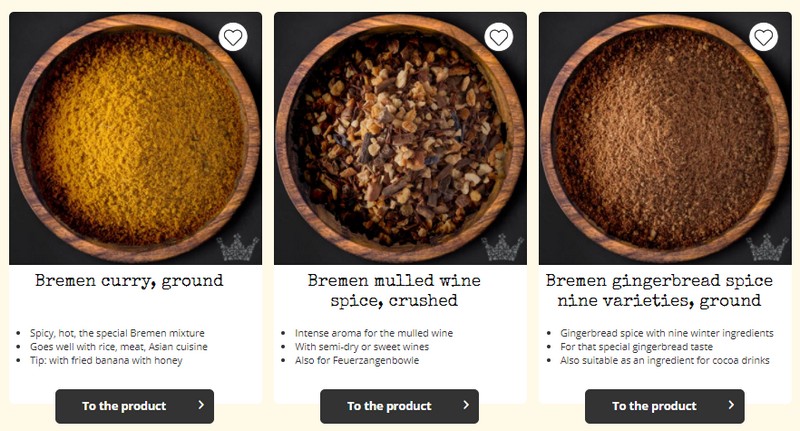
The customer experience is especially bad when two products with identical names and slightly different pictures and prices are listed right next to each other!
If store visitors have to guess what the differences might be, or even open both products and make comparisons via the text, it’s very unappealing.
Depending on the product and ideal customer, the product title on the category page can also be 2-3 lines long.
Alternatively, in some stores, it is possible to set relatively easily which fields should still be displayed in the store category.
Again, you can run A/B tests to find the best option for your visitors.
Product Images and the Alt Text
12. Product Photos with Alt Text
Normally, you have at least one product photo for a product. Often even more.
Many store systems now use the title of the product to automatically generate alt and title attributes for the images.
Check it easily via your browser! Right-click on a product photo and then on Inspect or Inspect item. You should then see the HTML tag of the product photo (<img …) and alt and title should contain text which describes the product well.
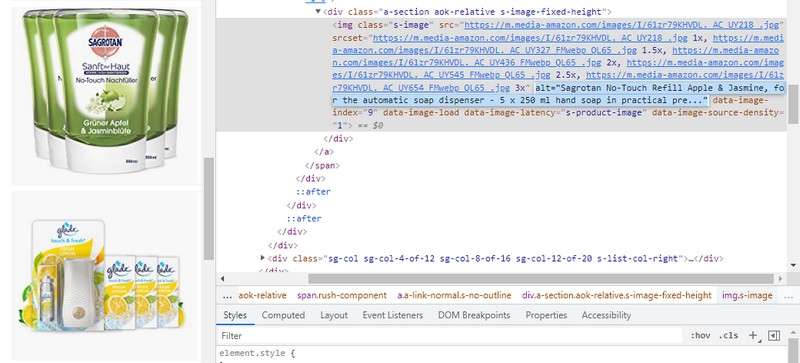
Long Content for Category Pages?
13. Long Content for Category Pages SEO – Yes or No?
A very difficult issue is the content itself.
In order to be listed high in the search engines through category pages SEO, this page must be optimized for a keyword. Surely you have already included the keyword in the URL, the title, and in a headline. Great!
However, the longer text is ideal for Google and other search engines. To get into the search results with one page, I recommend:
- At least 350 words for Landing Pages
- At least 500 words for Articles/Content Pages
Why do there have to be so many words?
According to John Muller of Google, it doesn’t take that many words. The Number of Words on a Page is not a Ranking Factor.
However, several measurements have shown that long content ranks significantly higher in Google search results than very short content.
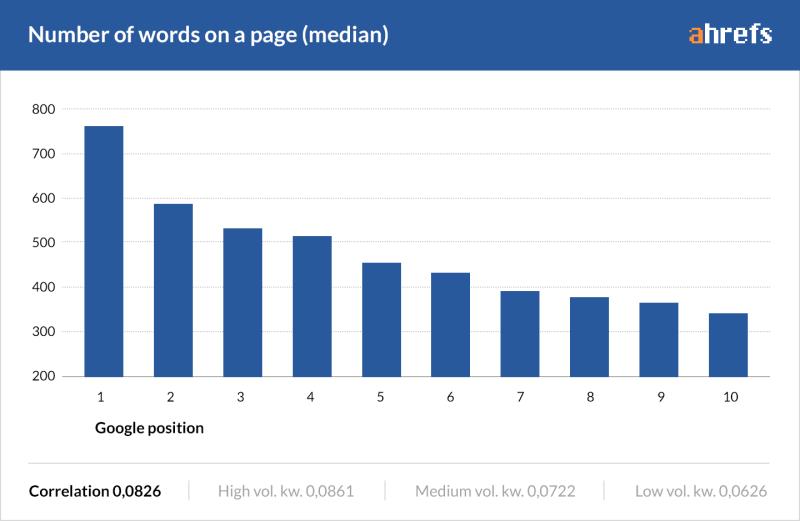
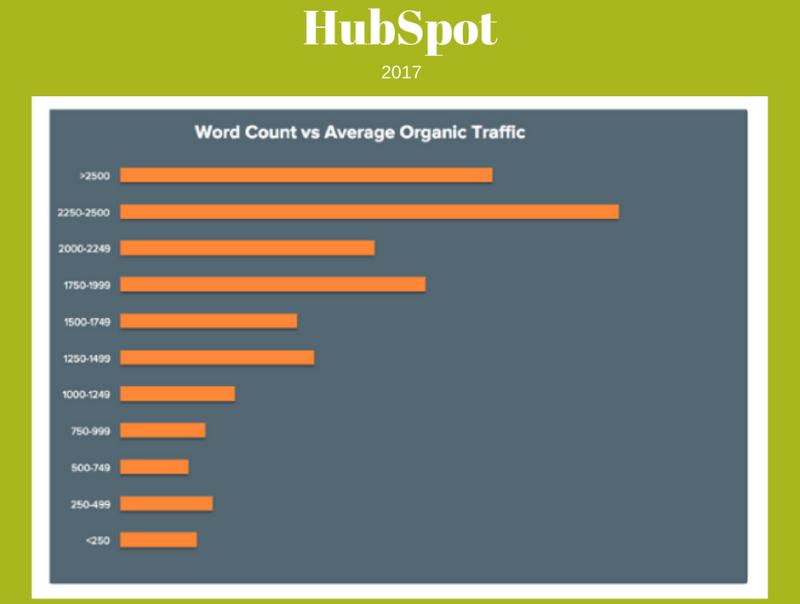
This is mainly due to a ranking criterion:
Long content gets more links.
More links lead to a better ranking in Search Engines.
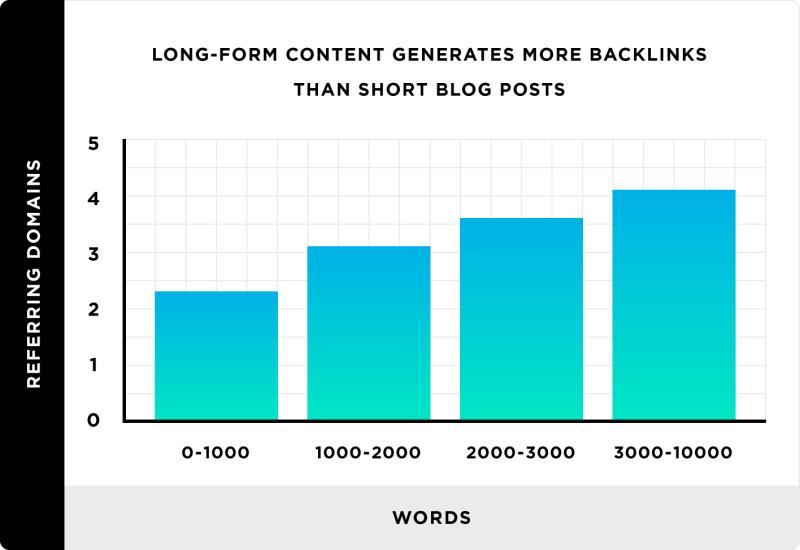
And it’s easy to see why.
Imagine you find a category page with 10 to 20 products and no other info. That’s fine, you can add your products to the shopping cart and order.
Alternatively, you will find another category page. All the questions you have are answered well and clearly.
There are videos with explanations. Photos, more tips, and information. These are well presented and told in a captivating way.
You are convinced that if you buy here, you are in good hands. The operators of the online store understand their products.
The next time someone in your Facebook group or circle of acquaintances hears about someone wanting to buy a similar product, which web store would you be more likely to recommend?
Surely you are also more likely to send the link to the category page with great content. This is how links are built and in other ways.
However, is it always useful to have a long content on the category page?
That is not easy to answer in general terms.
If we focus only on Google and category pages SEO, then many factors speak for it.
Is the content distracting your visitors from the buying experience? This may possibly be the case.
A good strategy here is to have only a very short text far at the top of the category page. This is followed by all the products, the navigation within the category, and the products.
According to John Muller of Google can follow a long content first under the products for more usability. This makes the category page look more like a page with valuable content.
Link to Top
14. Long Product Page? Link to Top
Both for long product pages, and generally for the vast majority of pages on a mobile device useful!
Build in a button that will move visitors up with one click.

Quick Navigation
15. Quick Navigation at the Bottom
Alternatively to the “Up Button” or even additionally you can test another navigation.
If your visitors have already reached the bottom of the navigation after scrolling, they will often find links to the next page here.
Depending on the store system, it may make sense to include another navigation here. This can be a slimmed-down version of your main navigation.
Alternatively, there is also a kind of tour or customer journey that your visitors should go through. With predefined navigation, it is possible to guide your visitors through your online store.
However, there are some details to consider here!
If you lead your visitors away early from the category for which your visitors already have a purchase intention, it can lead to fewer orders.
There are some store systems that offer a kind of “scrolling” function. Next product and last product. That directly at the SEO Optimized Product Description.
Something like this makes the most sense if a kind of browsing is desired. Possibly in the fashion sector.
In order to link from a category to suitable other categories, it is best to look at your web analytics software. Here you get information about the “click path”. The path and course that your visitors take.
Subcategories
16. Subcategories on the Category Page
In most store systems it is possible to display both product and/or subcategories on the category pages. Proceed carefully here!
I have already found several stores in my research, in which up to navigation depth 3 no products are displayed at all, but only subcategories.
I feel that this is not very user-friendly! In principle, I am interested in the product range offered. But this is not displayed to me by the store.
Instead, I have to click through a maze of subcategories.
In such a case, it may be more useful to display these categories in the sidebar above or below the filters.
Schema.org
17. Use Schema.org
Schema.org is an initiative launched by major search engines such as Google, Bing, and Yandex. Schema.org elements are a kind of meta-data that is supposed to structure information on websites.
Many themes nowadays already use many Schema.org elements correctly.
For Products, for example, exists a specific Scheme Definition. Every single product should be distinguished for a good category pages SEO also so.
Search engines and crawlers then have an easier time correctly identifying and processing information in your online store.
Conclusion
Conclusion
Unlike an SEO Optimized Product Description, you proceed with the category page SEO. Some points are similar, of course, such as title and meta description.
However, since a category page is structurally different from a product page, there are some special points to consider.
After you have optimized your category pages for search engines, there are several other steps that are now useful.
Both to have more visitors in the Online Store, as well as conversion rate optimization are always important topics.
Do you need support with your online store and category page SEO? Then just contact me.